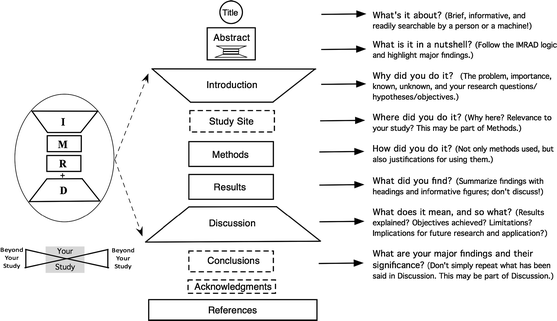
1. Skim!
Don't read the paper front to back, word for word. Check the paper title, headings, and subheadings. Check its date - if it is an old study it may not be worth your time.
2. Abstract
Start with the abstract. This will summarise the purpose of the study, the methodology, key findings and a brief conclusion. The abstract will let you know if the paper if worth closer attention.
3. Introduction
This lets you know what is already known about the topic of the paper, what is still unknown, and what the paper will try to investigate. Ask yourself, what problem is the research addressing? Why is it important?
4. Method
This part of the paper will let you know how the authors tried to answer their question. Methods can be complex to understand but they also make it possible for other researchers to try to replicate the work, or redo the experiment using different variables. Ask yourself, if the method used a good one? Could it be improved?
5. Results
These should be visual images and graphs. Ask yourself, do these results relate to the topic I am interested in?
6. Discussion
The discussion should demonstrate how the results have helped to answer the research question. They may point out limitations. Ask yourself, what questions still need to be answered?
"How to Read a Scientific Article." YouTube, uploaded by KU Libraries, 10 Mar.
2021, www.youtube.com/watch?v=R289jvNoUBA. Accessed 25 May 2023. CC BY.

Diagrammatic representation of the IMRAD structure of research papers. From: Wu, J. "Improving the writing of research papers: IMRAD and beyond." Landscape Ecol 26, 1345–1349 (2011). https://doi.org/10.1007/s10980-011-9674-3. Accessed 25 May 2023.